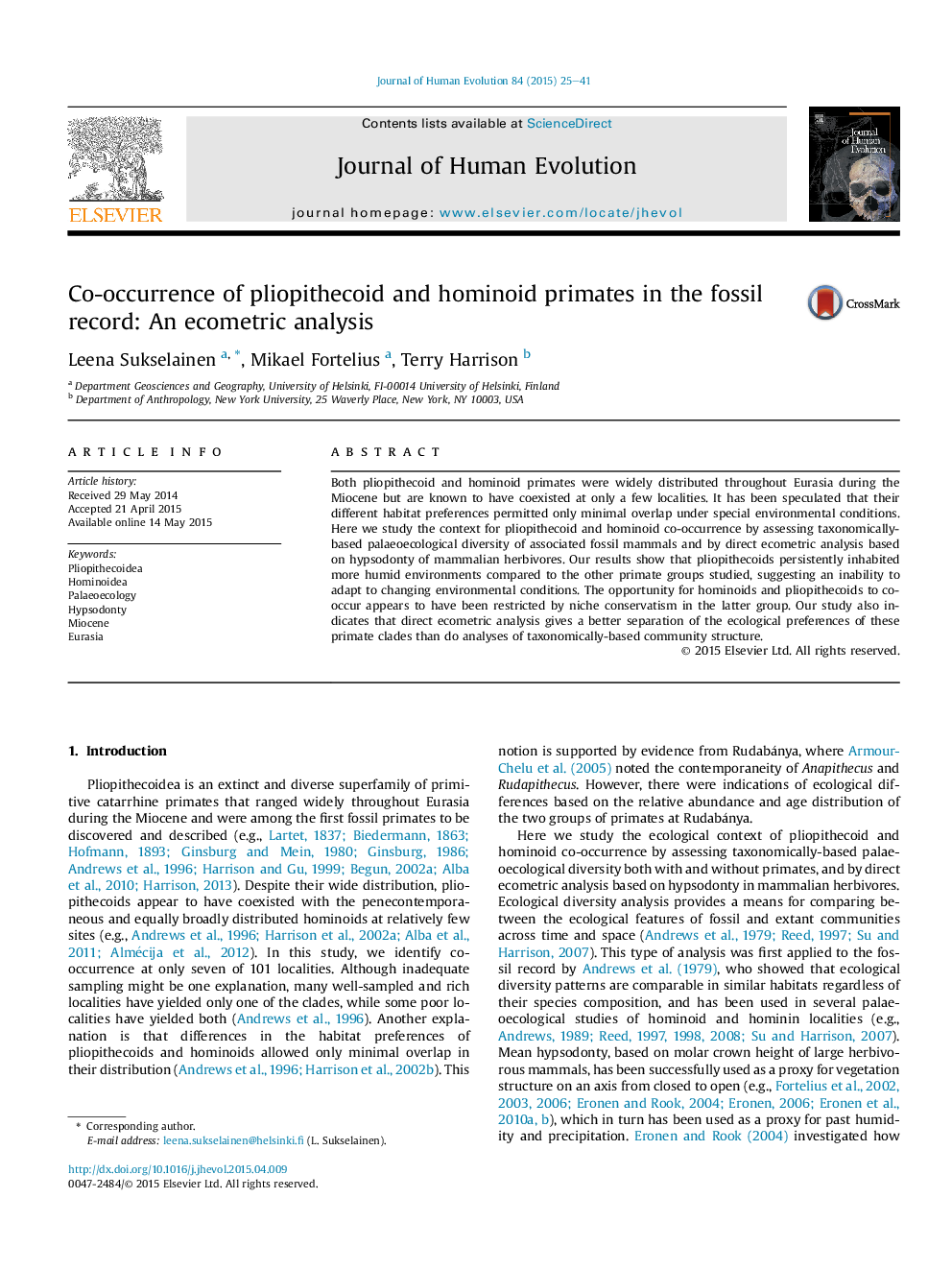| Article ID | Journal | Published Year | Pages | File Type |
|---|---|---|---|---|
| 4555957 | Journal of Human Evolution | 2015 | 17 Pages |
Both pliopithecoid and hominoid primates were widely distributed throughout Eurasia during the Miocene but are known to have coexisted at only a few localities. It has been speculated that their different habitat preferences permitted only minimal overlap under special environmental conditions. Here we study the context for pliopithecoid and hominoid co-occurrence by assessing taxonomically-based palaeoecological diversity of associated fossil mammals and by direct ecometric analysis based on hypsodonty of mammalian herbivores. Our results show that pliopithecoids persistently inhabited more humid environments compared to the other primate groups studied, suggesting an inability to adapt to changing environmental conditions. The opportunity for hominoids and pliopithecoids to co-occur appears to have been restricted by niche conservatism in the latter group. Our study also indicates that direct ecometric analysis gives a better separation of the ecological preferences of these primate clades than do analyses of taxonomically-based community structure.
